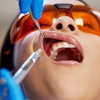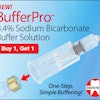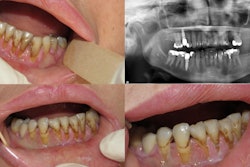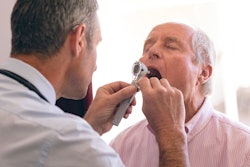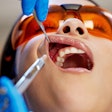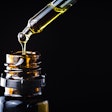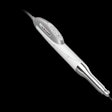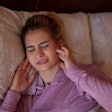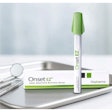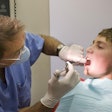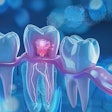In what is believed to be the first reported case of its kind, a drug used to manage high blood pressure caused a 45-year-old man to develop a toothache after each dose. The case report was recently published in Frontiers in Pharmacology.
The man’s symptoms resolved after he stopped taking the prescribed 50-mg daily dose of losartan potassium, indicating that the angiotensin II receptor blocker (ARB) may be linked to toothaches in rare cases, the authors wrote.
“Recognizing this possibility may prevent unnecessary dental procedures and guide ARB substitution when appropriate,” wrote the authors, led by Dr. Tao Liu of the Nanjing University of Chinese Medicine in China (Front Pharmacol, October 1, 2025, Vol. 16, 167918).
A 45-year-old man with hypertension, diabetes
The man had been diagnosed with type 2 diabetes for eight years and hypertension for five years when he was switched from the high blood pressure drug amlodipine 5 mg to losartan potassium 50 mg for better kidney protection.
Within about 30 minutes after taking his first dose of losartan, the man experienced a diffuse, throbbing maxillary toothache, which he rated a 7 out of 10 on the visual analog scale (VAS) for pain. His pain was completely gone about two hours after omitting the next dose. Over the following week, his tooth pain returned at the same post-dose interval every day, the authors wrote.
The man was taking metformin and atorvastatin as prescribed but no analgesics, antibiotics, or other medications while taking losartan. He underwent an exam and panoramic x-ray, which showed no visible dental lesions, and his lab work was unremarkable, they wrote.
The patient was told to stop taking losartan and instead was prescribed candesartan 8 mg. After three months, the new medication controlled his blood pressure and his dental symptoms didn’t return, according to the case report.
What to consider
Patients who report pain after every dose of a medication but which then vanishes on withdrawal should undergo a thorough prescription review before undergoing invasive dental procedures, the authors wrote.
In these cases, a medication should be switched instead of stopped to see if pain symptoms are resolved. More research should be conducted in the future, because this case report has limitations, including the absence of pulp vitality testing, they wrote.
“In summary, this case provides evidence that losartan, despite its established safety, may occasionally be associated with reproducible toothache that resolves on withdrawal and recurs on re-challenge,” Liu and colleagues wrote.


